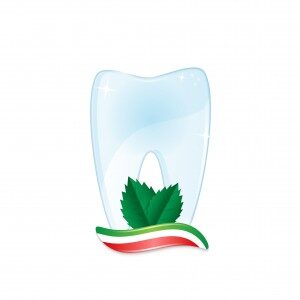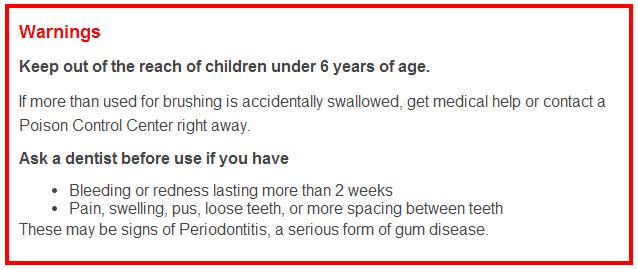Fluoride in Water and Toothpaste is added in order to prevent tooth decay. Really…
Did you know that Fluoride has been added to drinking water supplies internationally for decades? This was in order to prevent tooth decay… Fluoride can also be found in most brands of bottled water and in all food products using fluoridated water for the same reason.
Over 95% of the toothpastes sold internationally contain fluoride as well? Fluoride has been added to toothpastes since the 1890s but fluoride toothpaste did not become a common dental hygiene product until the 1970s.
However, that’s all changing, as many countries have completely removed and banned the practice of having fluoride in water. The accumulative amount of fluoride is what has alarmed many. First, let us understand what we are dealing with and why it should be important to you and your children’s health.
What is fluoride?
The fluoride added to water or toothpaste in an effort to prevent tooth decay is actually sodium fluoride. It is produced through a chemical reaction that includes phosphate rocks. Sodium fluoride is the result of fluorocarbon synthesis. Several million tons of sodium fluoride are produced each year in the world. Fluoride toxicity is a real concern that must be weight with the proposed benefits.
Supposed Benefits of Fluoride:

Fluoride added in drinking water and toothpaste suppose to prevent tooth decay. It is believed that fluoride helps slow down the erosion of the minerals that form enamel and helps enamel remineralize. Using fluoride toothpaste or drinking fluoridated water increases the amount of fluoride that can be found in saliva, which means the enamel is constantly exposed to fluoride. The National Institute of Dental Health conducted a study to assess the benefits of drinking fluoridated water and found that it had no effect on reducing cavities.
Fluoride Dangers
 The National Institute for Occupational Safety and Health and the Occupational Safety and Health Administration have determined that exposed to fluoride is not entirely safe. These organizations have set standards for the maximal dose of fluoride to which individuals can be exposed to in an occupational environment. Studies have also shown that fluoride is not entirely safe when used in drinking water or toothpaste. A study conducted by the U.S. Army Medical Command showed that the average American is exposed to unhealthy levels of fluoride. A Dartmouth University study also showed that fluoride is linked to high lead levels in children.
The National Institute for Occupational Safety and Health and the Occupational Safety and Health Administration have determined that exposed to fluoride is not entirely safe. These organizations have set standards for the maximal dose of fluoride to which individuals can be exposed to in an occupational environment. Studies have also shown that fluoride is not entirely safe when used in drinking water or toothpaste. A study conducted by the U.S. Army Medical Command showed that the average American is exposed to unhealthy levels of fluoride. A Dartmouth University study also showed that fluoride is linked to high lead levels in children.
Fluoride in Water and Toothpaste Video from The Health Specialist Channel
Fluoride in Water Video from breakingtheset Channel
Water Fluoridation is Banned in many countries around the world.
The following is a limited list of countries that have banned water fluoridation: Austria, Belgium, China, Czech Republic, Denmark, Findland, France, Germany, Hungary, India, Israel, Japan, Netherlands, Northern Ireland, Norway, Scotland, Sweden, and Switzerland.
Long Term Side Effects Of Fluoride
If exposure to fluoride occurs over the course of several years, a number of health problems can appear. Drinking fluoridated water or using fluoride toothpaste does not necessarily mean that a person will develop a health condition but it increases the risks of developing these conditions:
- Cancer
- Alzheimer’s
- Infertility
- Arthritis
- Bone damage
- Diabetes
- Cardiovascular disease
- Kidney disease
- Gastrointestinal issues
- Thyroid disease
Fluoride can be stored in the human body over the years. Even if one is exposed to very small quantities of fluoride that would be considered as harmless, it is possible that a health condition will appear as a result of fluoride being stored in one’s system over the years.
Other Side Effects
It would take years of exposure to high levels of fluoride to develop one of the conditions mentioned above. However, fluoride can trigger some of these side effects on the short term:
- Early onset of puberty in girls
- Tooth discoloration known as dental fluoroscis
- Negative effects on the nervous system
- New research suggest that fluoride can damage the brain and even lower IQ.
There have also been cases of fluoride poisoning due to exposure to high doses of fluoride. The symptoms of poisoning include nausea, respiratory problems, skin rashes or hypersensitivity to water that contains fluoride.
FDA Regulations – The Warning Label
The FDA regulates the use of fluoride in toothpaste. Manufacturers have to meet a few requirements before they can commercialize a toothpaste that contains fluoride. However, the FDA does not test new products. The American Dental Association is responsible for testing new products and a seal of approval is given if the product meets certain criteria. A product will not obtain the seal of approval from the ADA unless it is proven that the toothpaste can reduce tooth decay through lab tests and studies on humans.

Now let us ask ourselves a question: Why would we put something poisonous in our mouths?
In several countries, it is accepted that Fluoride used to treat a medical problem (i.e., dental cavities). Therefore, they state that they cannot add fluoride to the water supply since it would be forcing a medical treatment on people who have no personal choice.
How Much Fluoride Is Safe?
The Institute of Medicine conducted a study that determined that it is safe to ingest 10 milligrams of fluoride a day for an individual’s entire life. However, another study from the Institute of Medicine showed that this same quantity of fluoride can cause bone damage (particularly in men) if ingested daily for ten to twenty years. The truth is that it is difficult to determine how much fluoride is dangerous since everyone has a different level of tolerance. The FDA requires toothpaste manufacturer to include a label that warns people and recommend them to call a poison control center if the product is ingested due to the difficulty of assessing how fluoride affects everyone.
Solution for Fluoride in Water and Toothpaste?
Switching to fluoride free toothpaste will help you reduce exposure to fluoride. Tap water is already fluoridated and bottled water contains varying levels of fluoride. This can be solved by installing a water filter that removes fluoride from your drinking water. By installing a water filter the water you drink and the food that you prepare will be safe. Also, it is best to choose toothpaste free of fluoride.
Where to Buy Fluoride Free Toothpaste?
You can find non fluoride toothpaste in stores or purchase it online. Most major brands of toothpaste offer at least one non fluoride toothpaste but you need to carefully check the labels of the products you purchase. A brand can claim to sell a fluoride free toothpaste and actually use a small quantity of fluoride in the product or have other questionable ingredients.
Take the time to read the ingredients listed on the package instead of purchasing a product that claims to be free or fluoride since the definition of this term can vary from one brand to another. Since the FDA requires manufacturers to include a warning labels of the dangers of ingesting fluoride, the absence of this label is a good indication that you are looking at a toothpaste without fluoride.
One Last Precaution Regarding Fluoride Free Toothpastes
You are now convinced of the need to use a non fluoride toothpaste. However, before running to your local store or to an online store, consider a few things. Not all fluoride free toothpastes are the same!
There other ingredients, which have not received attention as much as fluoride, but are nonetheless worthy of your attention. Consider the following ingredient that are in some popular fluoride free toothpaste brands.
- Triclosan: Triclosan was first recognized in 1969 as a pesticide (Environmental Protection Agency). It is linked to several troublesome conditions: Infertility, thyroid irregularity, brain hemorrhaging, paralysis, and damage of the heart, liver, lungs, and kidneys.
- Food Coloring (i.e., FD&C blue dye #1&2): A University of Melbourne study identified links between certain food coloring and ADHD (Attention Deficit Hyperactivity Disorder) and other behavioral and sleep disturbances.
- Sodium Lauryl Sulfate (Also known as SLS): An American College of Toxology report stated that it is “highly irritating and dangerous.” it can be linked to canker sores, and other ulcers of the mouth. It is a well-known irritant found in numerous products of the skin, hair, and mouth.
- Hydrated Silica: An anti-caking agent used to make teeth whiter, which in the crystalline form may be cancer causing (carcinogenic). It can change the PH balance in the mouth.
- Sorbitol: University of Hamburg researches have identified it as carcinogenic with long-term use.
- Xylitol: It is a sugar derived product using a chemical process that uses activated charcoal, calcium oxide, sulfuric acid, phosphoric acid. If it is consumed in high amounts can cause diarrhea and indigestion. According to the FDA it can be fatal to certain pets, if consumed. High consumption by humans would raise concerns. Considered safe in moderation, but not “natural” given the chemical process.
- Glycerin: Some say that it blocks the process of re-mineralization because of his hard-to-remove coating effect.
- Sodium monofluorophosphate: May be link to problems with the neurotoxicity and cancer.
- Titanium Dioxide: A report by the IARC (International Agency for Research on Cancer), partially based on animal research, determined that Titanium Dioxide is a possible carcinogenic for humans.
- Tetrasodium pyrophosphate: Depending on the individual and amounts of exposure, various studies link it to the following side effects: cardiovascular problems; kidney and liver damage; blood problems; irritation of the eyes and skin, intestinal tract and respiratory system; vomiting; diarrhea; shortness of breath; and tiredness.
Consult a dentist to determine which toothpaste is right for you and your family.
Fluoride Water Filters
Click Here for some Water Filters that will Remove the Fluoride in Drinking Water or contact us and we will inform you in details.
Related Links:
Reverse Osmosis Economic System 5 stage
Filtration Water Treatment Systems for Removing Contaminants
Whole House Water Filtration System
Home Water Filtration System
The benefits of using shower water filter systems
- How do you use SodaStream Duo – Step by Step Guide? - February 6, 2024
- Why Choose Tankless Systems? Discover the Best Tankless Reverse Osmosis Systems in Cyprus - December 18, 2023
- Comparison of Chlorine vs Chlorine Dioxide: Which is the Superior Sanitizer? - June 25, 2023
